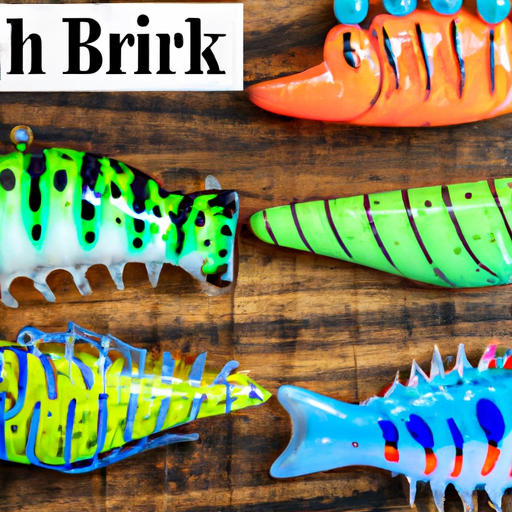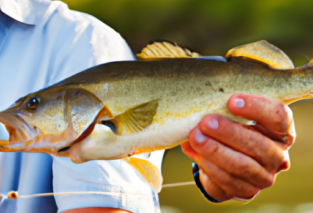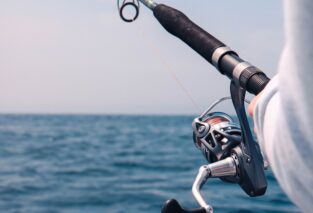Are you a new angler looking to get started with fishing but feeling overwhelmed with the wide variety of bait options available? Look no further than “A Simple Guide To Bait Selection For New Anglers.” This comprehensive guide is designed specifically for beginners like you, providing easy-to-understand tips and techniques to help you choose the right bait for different fishing conditions. Whether you’re targeting freshwater or saltwater species, this guide will give you the confidence to make informed decisions and increase your chances of a successful catch. Say goodbye to confusion and hello to a rewarding fishing experience with this indispensable resource.
Understanding different types of bait
When it comes to fishing, choosing the right bait is essential. Bait is what lures the fish to your hook, enticing them to take a bite. There are various types of bait available, each with its own advantages and disadvantages. Understanding the different types of bait will help you make an informed decision and increase your chances of a successful catch.
Live bait
Live bait is exactly what it sounds like – bait that is alive and moving. This type of bait is incredibly effective as it mimics the natural movement of prey in the water, attracting the attention of nearby fish. Live bait can be purchased from fishing stores or caught yourself. It is important to keep live bait in proper conditions to ensure its effectiveness.
Artificial bait
Artificial bait, on the other hand, is man-made and designed to mimic the appearance and movement of real bait. These baits come in a wide range of shapes, colors, and sizes, and can be made from materials such as soft plastic or metal. Artificial bait is popular among anglers due to its versatility and ease of use. It can be used in various fishing techniques and is often reusable.
Natural bait
Natural bait consists of organic materials found in the fish’s natural environment. This type of bait includes items such as nightcrawlers, insects, shrimp, powerbait, and dough bait. Using natural bait can be highly effective, as it closely resembles the food that fish naturally feed on. However, natural bait can be more difficult to obtain and may require more preparation compared to other types of bait.
Factors to consider when selecting bait
Choosing the right bait is not a one-size-fits-all approach. Several factors should be taken into consideration to ensure the best possible bait selection. These factors include the target fish species, time of year, water conditions, and fishing location.
Target fish species
Different fish species have different feeding habits and preferences. Some fish are more attracted to live bait, while others have a preference for artificial or natural bait. Researching the specific fish species you are targeting will help you determine the most suitable bait to use.
Time of year
The time of year can also have a significant impact on bait selection. Fish behavior and feeding patterns can change depending on the season. For example, in the spring, fish may be more active and willing to bite, while in the winter, they may be more sluggish and less likely to feed. Adjusting your bait selection according to the season can greatly increase your chances of success.
Water conditions
The clarity and temperature of the water can play a crucial role in bait selection. Clear water requires more realistic and subtle baits to avoid spooking the fish, while murky water may require louder and more attention-grabbing baits. Additionally, the water temperature can affect fish metabolism, which in turn affects their feeding habits. Adjusting your bait selection based on these water conditions will ensure optimal results.
Fishing location
Different fishing locations may have specific bait preferences due to the local ecosystem and the prevalent fish species. For example, freshwater lakes may require different bait than rivers or streams. Researching the specific fishing location will provide insight into the bait that is most commonly used and successful in that area.

Live bait options
Live bait is a popular choice among many anglers due to its effectiveness in attracting fish. Here are some common live bait options:
Worms
Worms are one of the most widely used live baits. They can be easily obtained or even dug up in your own backyard. Worms are particularly effective for a variety of fish species, including bass, trout, and panfish.
Minnows
Minnows are small, silvery fish that are often used as live bait. They can be purchased from fishing stores or caught using a small net. Minnows are commonly used to target larger predatory fish such as bass and pike.
Crickets
Crickets are an excellent choice for anglers targeting panfish, trout, or bass. They are easy to keep and handle, making them a popular choice for both beginners and experienced anglers alike.
Leeches
Leeches are another type of live bait that can be effective for certain fish species, particularly walleye and northern pike. They are often purchased from fishing stores and should be handled with care.
Crawfish
Crawfish, also known as crayfish or mudbugs, are highly effective live bait for bass and other freshwater fish. They can be found in rivers, streams, and other bodies of water, or purchased from bait shops.
Artificial bait options
Artificial bait, also known as lures, is a versatile and popular choice among anglers. Here are some common types of artificial bait:
Soft plastic lures
Soft plastic lures come in a wide variety of shapes, sizes, and colors. They can mimic a variety of natural prey, such as worms, insects, and small fish. Soft plastic lures are versatile and can be used in various fishing techniques, making them a great option for beginners.
Spinnerbaits
Spinnerbaits consist of a metal blade that rotates as the lure is retrieved, creating flash and vibrations to attract fish. They are particularly effective for targeting predatory fish such as bass and pike.
Jigs
Jigs are versatile lures that can be used in both freshwater and saltwater fishing. They consist of a weighted head and a trailing soft plastic or feathered tail. Jigs are effective for a wide range of fish species and can be used in various fishing techniques.
Spoons
Spoons are metal lures with a concave shape that imitates the movement of a wounded baitfish. They are highly effective in attracting predatory fish, particularly in open water and deep fishing.
Plugs
Plugs are hard-bodied lures that are designed to mimic the movement and appearance of small fish. They are commonly used in trolling and can be effective for a variety of fish species, both in freshwater and saltwater.
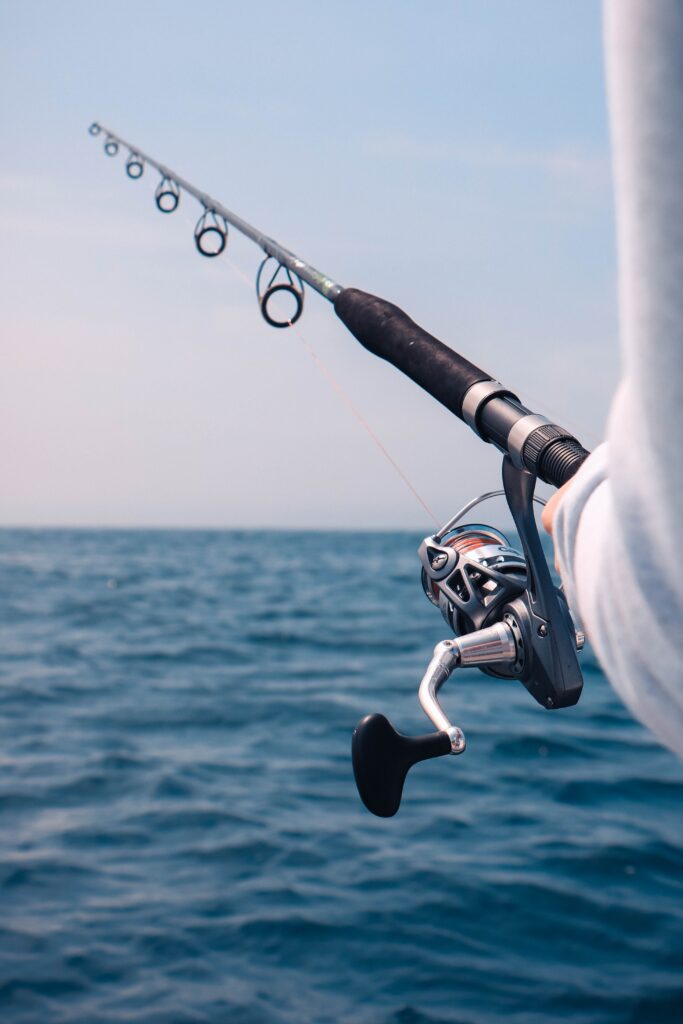
Natural bait options
Using natural bait can be highly effective, as it closely mimics the food that fish naturally feed on. Here are some common natural bait options:
Nightcrawlers
Nightcrawlers are large worms that can be easily purchased from fishing stores or collected in damp soil. They are highly effective for a variety of fish species, including trout, bass, and catfish.
Insects
Insects such as grasshoppers, crickets, and flies can be used as natural bait for a variety of fish species. They are particularly effective for panfish and trout.
Shrimp
Shrimp is a popular natural bait option for saltwater fishing. It can be purchased frozen or live and is highly effective in attracting a variety of saltwater fish species.
Powerbait
Powerbait is a specially formulated synthetic bait that comes in various colors and scents. It is particularly effective for trout fishing and can be easily molded onto hooks.
Dough bait
Dough bait is a type of bait that is made by combining flour, cornmeal, and other ingredients. It is commonly used for carp fishing and can be easily shaped into balls or cubes.
Choosing the right bait for specific fish species
Different fish species have different preferences when it comes to bait. Here are some guidelines for choosing the right bait for specific fish species:
Trout
Trout are often attracted to live bait such as worms and insects, as well as artificial lures that mimic small fish or insects. Powerbait is also highly effective for trout fishing.
Bass
Bass are predatory fish and are often attracted to live bait such as minnows, worms, and crawfish. Artificial lures such as spinnerbaits and soft plastic lures are also highly effective for bass fishing.
Panfish
Panfish, including bluegill and crappie, can be attracted to a variety of live bait options, including worms, crickets, and small minnows. Soft plastic lures and small jigs are also effective for panfish.
Catfish
Catfish are bottom-dwelling fish and are often attracted to strong-smelling natural baits such as worms, shrimp, and stink bait. They can also be caught using live bait such as minnows or cut bait.
Saltwater fish
Saltwater fish species, such as redfish and snook, can be attracted to a variety of natural and artificial bait options. Live bait such as shrimp and small fish, as well as artificial lures such as spoons and plugs, can be effective for saltwater fishing.

Tips for bait selection in different seasons
The time of year can greatly impact fish behavior and feeding habits. Here are some tips for bait selection in different seasons:
Spring
In the spring, fish are often more active and willing to bite as they emerge from their winter slumber. Live bait such as worms and minnows can be highly effective during this time. Using bright-colored artificial lures can also grab the attention of fish that are actively feeding.
Summer
In the summer, fish may become more selective in their feeding habits due to warmer water temperatures. Natural baits such as insects and shrimp can be effective, as well as artificial lures that mimic the movement of prey.
Fall
Fall is a great time for fishing, as fish are often more active and preparing for the upcoming winter. Live bait such as minnows and crawfish can be highly effective during this season. Artificial lures such as spinnerbaits and jigs can also imitate the baitfish that fish are feeding on.
Winter
In the winter, fish are often less active and feeding less frequently. Slow-moving live baits such as minnows and worms can entice sluggish fish to bite. Artificial lures that mimic injured baitfish can also be effective for winter fishing.
Considering water conditions when choosing bait
Water conditions can greatly impact the success of your bait selection. Here are some factors to consider when choosing bait based on water conditions:
Clear water
In clear water, fish can have a better view of their surroundings, including your bait. Using more realistic and subtle bait options is crucial to avoid spooking the fish. Soft plastic lures in natural colors can be highly effective, as well as live bait options such as nightcrawlers and small minnows.
Murky water
Murky or stained water can limit visibility for fish. Using louder and more attention-grabbing bait options can help fish locate your offering. Brightly colored soft plastic lures, spinnerbaits with flashy blades, and scented natural baits can be effective in murky water.
Shallow water
In shallow water, fish are often more easily spooked. Using smaller bait options that closely resemble the fish’s natural prey is recommended. Lightweight spinnerbaits, small jigs, and live baits such as crickets and worms can be effective in shallow water.
Deep water
In deep water, fish may be holding at different depths and can be more difficult to locate. Using bait that can reach the desired depth, such as spoons or weighted jigs, is crucial. Slow-moving and highly visible bait options are recommended to entice fish in deep water.
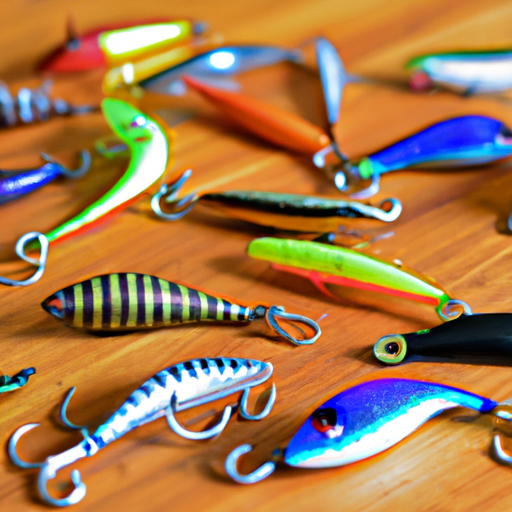
Location-specific bait selection tips
Different fishing locations may require different bait selections to increase your chances of success. Here are some location-specific bait selection tips:
Freshwater lakes
Freshwater lakes are home to a variety of fish species, including bass, trout, and panfish. Live bait options such as worms, minnows, and crawfish can be effective, as well as artificial lures such as spinnerbaits and soft plastic lures.
Rivers and streams
Rivers and streams often have fast-moving water, which can impact bait selection. Natural baits such as worms, insects, and small minnows can be effective, as well as artificial lures that can withstand the strong currents.
Ponds
Ponds are typically smaller bodies of water and can be home to a variety of fish species. Live bait such as worms and crickets can be effective, as well as artificial lures such as small jigs and soft plastic lures.
Ocean fishing
Ocean fishing requires specific bait options depending on the target fish species. Live bait such as shrimp and small fish can be effective, as well as artificial lures such as spoons and plugs. Researching the target fish species and local regulations will help determine the most suitable bait options.
Experimenting with different baits
As an angler, it is important to experiment with different baits to find what works best for you in different fishing situations. Here are some tips for experimenting with different baits:
Trying new types of bait
Don’t be afraid to try new types of bait that you haven’t used before. It can be exciting to discover how different bait options perform and what fish species they attract. Ask fellow anglers for recommendations or try out bait options based on your research and fishing goals.
Adapting to fish behavior
Fish behavior can change depending on various factors such as weather conditions, time of day, and water temperature. It is important to adapt your bait selection based on fish behavior. If one bait option isn’t producing bites, try switching to another to see if it entices the fish to bite.
Observing successful anglers
Observing successful anglers can provide valuable insights into bait selection. Pay attention to what bait options they are using and how they are using them. Take note of any patterns or strategies they employ to attract fish. You can also ask for advice and tips from experienced anglers who have a proven track record of success.
In conclusion, bait selection is a critical aspect of fishing. Understanding the different types of bait, considering various factors such as target fish species, time of year, water conditions, and fishing location, and experimenting with different bait options will help increase your chances of a successful catch. Remember to have fun and enjoy the process of discovering what works best for you as an angler. Happy fishing!
